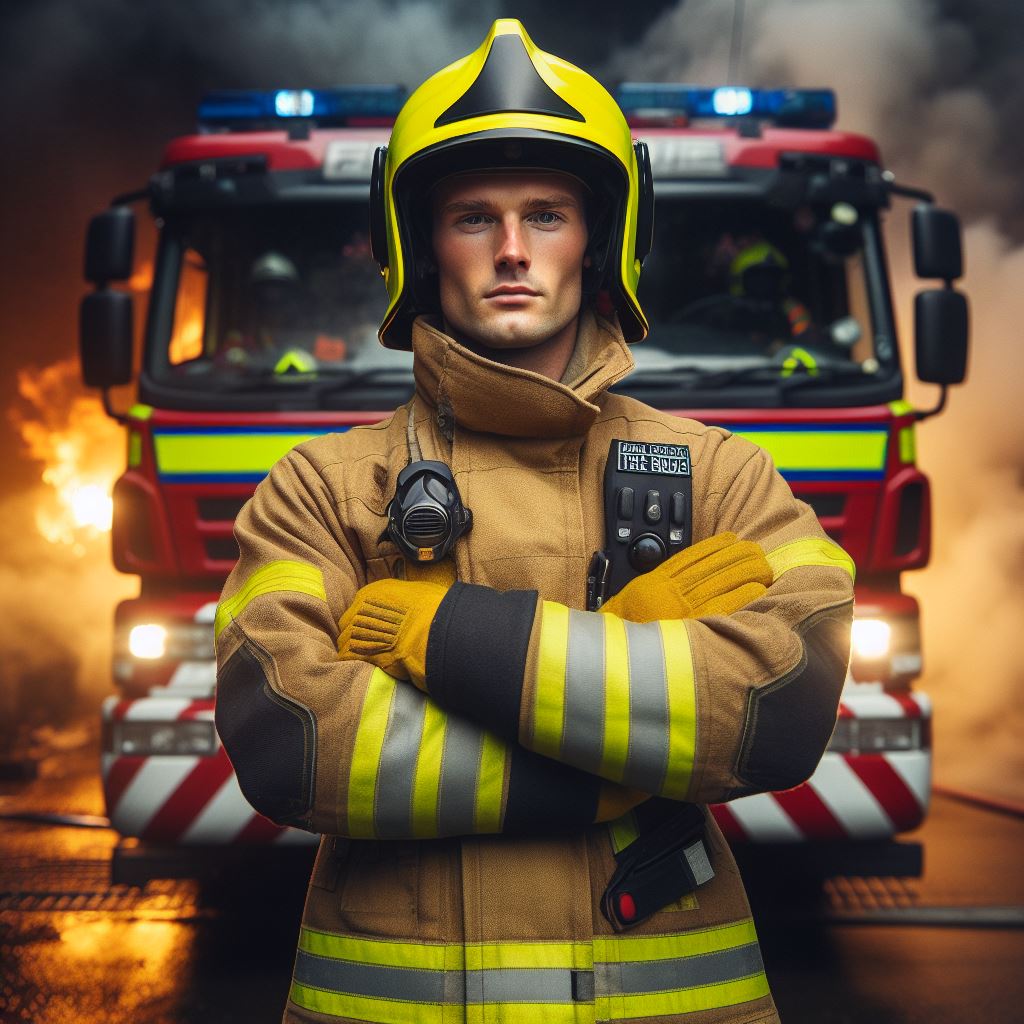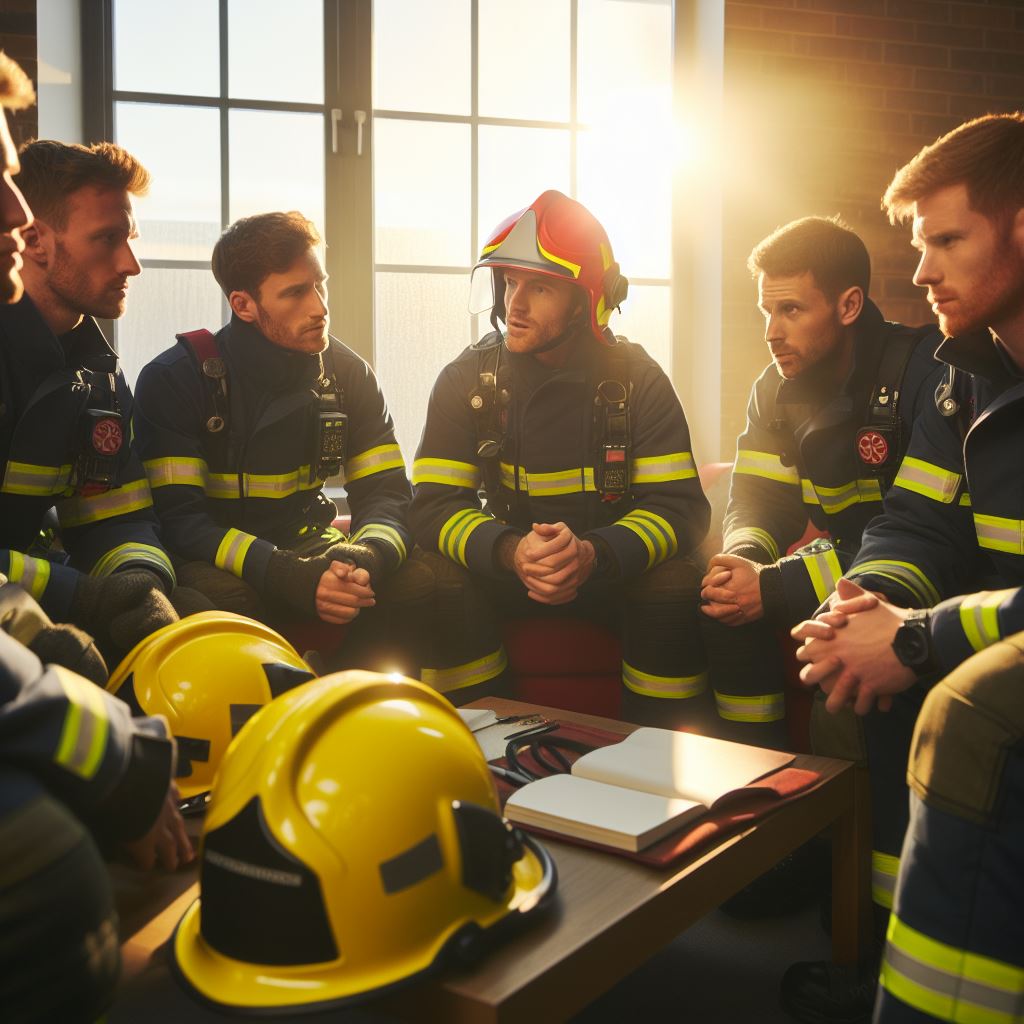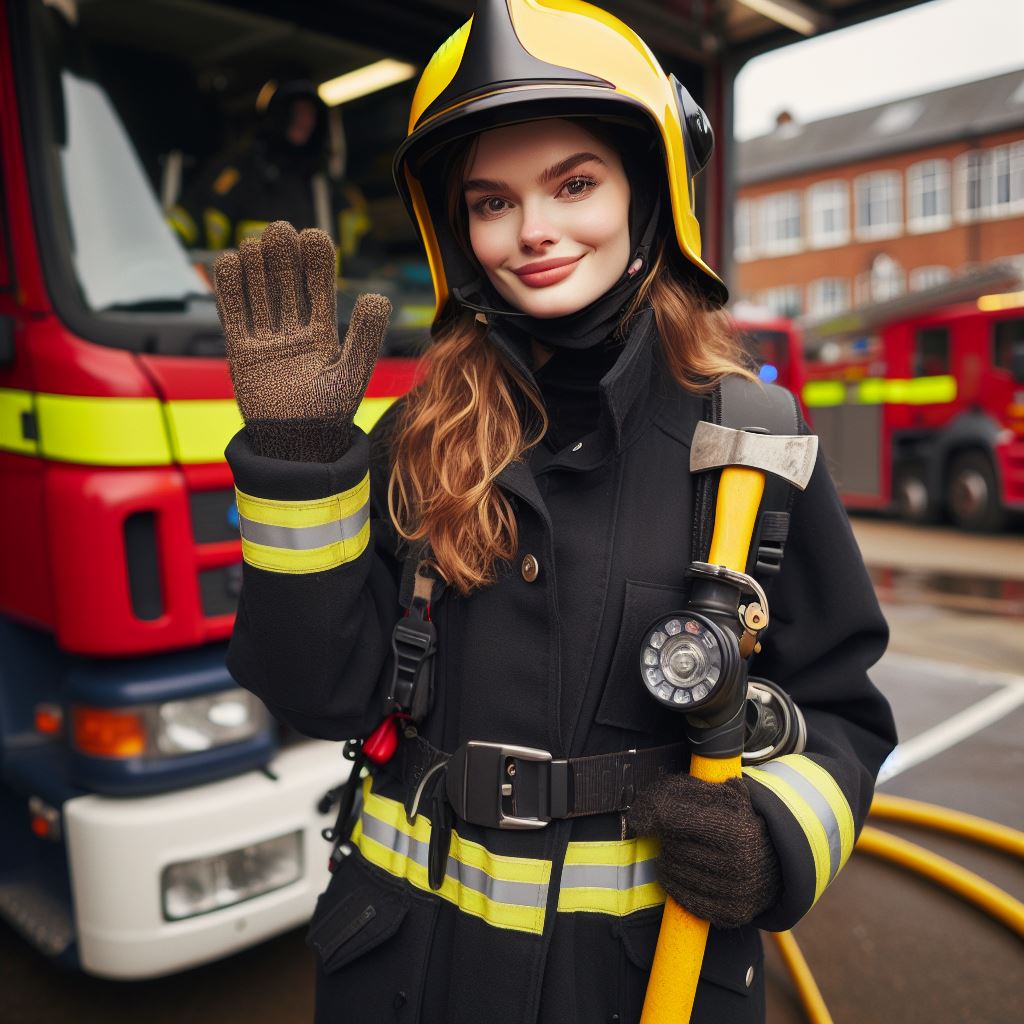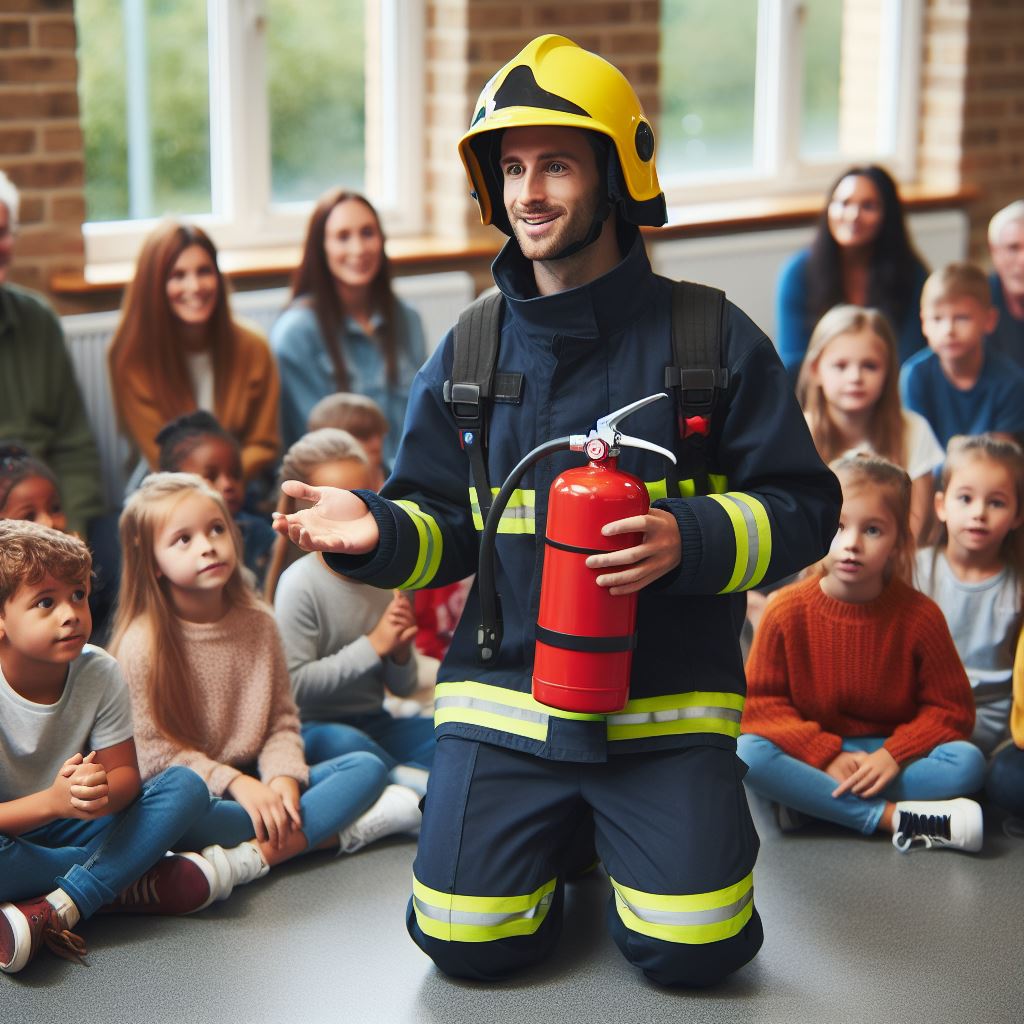Introduction
Firefighters, regarded as heroes, courageously confront dangers to save lives and property, acting as society’s frontline defense against fires.
The history of firefighting dates back millennia, involving primitive community efforts with buckets and animal skins to extinguish flames.
Organized fire brigades emerged in ancient Rome, equipped with buckets, hooks, and axes. In the
United Kingdom, significant developments unfolded, notably marked by the Great Fire of London in 1666, leading to the establishment of the first organized fire service.
Legislative measures, including the Fire Engines Act of 1707, were enacted, emphasizing fire prevention.
Technological advancements, like steam-powered fire engines in the 19th century, transformed firefighting’s effectiveness.
The London Fire Brigade’s creation in 1866 solidified the importance of organized fire services.
Today, UK firefighters are highly trained professionals equipped with cutting-edge gear and technology, embodying a progressive journey of innovation and commitment.
The history of UK firefighting represents an intriguing narrative reflecting the evolution of techniques, equipment, and organized services.
From ancient times to the present, firefighters’ unwavering efforts have been vital in protecting communities from fire’s destructive force.
Early Methods of Firefighting
A. Overview of firefighting methods in ancient times
The history of firefighting in the United Kingdom is rich with tales of bravery and ingenuity.
During ancient times, civilizations used primitive techniques to combat fires. Community efforts, such as bucket brigades, were relied upon to extinguish flames.
Firefighters in those days used animal bladders or leather bags filled with water to throw onto the flames, attempting to drown them out.
Some ancient civilizations, like the Romans, even had organized firefighting brigades.
Rome embraced fire prevention and suppression through a special detachment known as the “vigiles”
Personalized UK Career Consulting
Receive tailored career guidance designed just for you. Get actionable steps and expert support to boost your career in 1-3 days. Take control of your career now.
Get StartedB. Fire prevention measures in medieval England
In medieval England, the prevalence of wooden structures prompted the appointment of fire wardens to actively enforce fire safety regulations.
They inspected chimneys for cleanliness and prohibited the use of open flames during certain hours.
Dangerous activities like blacksmithing were restricted to designated areas to minimize the risk of fires breaking out.
Additionally, medieval towns had strategically located water sources to ensure a swift response to any fire emergencies.
C. The use of early fire suppression tools
- Early firefighters in the United Kingdom depended on basic tools for fire suppression.
- Hand-operated pumps, placed near water sources, became a common tool used to combat fires.
- Operated by manpower, these pumps provided a continuous stream of water to extinguish flames.
- Firefighters also relied on water-filled buckets, which were manually thrown onto the fires.
- The use of human chains enabled the quick and efficient passing of buckets from one person to another.
Overall, The early methods of firefighting in the United Kingdom laid the foundation for modern firefighting practices.
Despite the limitations of their tools, these early firefighters displayed remarkable courage and resourcefulness.
Their dedication eventually led to advancements in firefighting technology and techniques.
Through the centuries, firefighting in the United Kingdom has evolved and become more sophisticated, resulting in an enhanced ability to protect lives and property.
Read: UK Firefighter Training: What Does It Take?
Development of Fire Brigades
A. Early volunteer fire brigades in the United Kingdom
During the 17th and 18th centuries, various communities in the United Kingdom formed volunteer fire brigades.
These volunteer brigades were comprised of citizens who came together to fight fires and protect their communities.
They were initially equipped with hand-operated pumps that were used to extinguish flames.
B. The Great Fire of London (1666) and its impact on firefighting practices
The Great Fire of London in 1666 was a devastating event that led to significant changes in firefighting practices.
After the fire, the government established the first fire insurance company called The Fire Office.
Your Dream Job Starts with a Perfect CV
Get a tailored CV and cover letter that captures your unique strengths and stands out in your industry. Let us help you make an unforgettable first impression.
Get StartedThis marked the beginning of organized firefighting efforts and the introduction of fire insurance.
C. Establishment of the first professional fire brigade in Edinburgh (1824)
In 1824, the first professional fire brigade in the United Kingdom was established in Edinburgh, Scotland.
This brigade was funded by the municipal corporation and consisted of full-time paid firefighters.
Their primary responsibility was to respond to fires and keep the city safe.
D. The Metropolitan Fire Brigade Act (1865) and the formation of London’s Metropolitan Fire Brigade
- The Metropolitan Fire Brigade Act was passed in 1865, leading to the formation of London’s Metropolitan Fire Brigade.
- This act created a centralized fire service for the city of London, replacing the various local fire brigades.
- The Metropolitan Fire Brigade became the largest and most important fire service in the United Kingdom.
- It was equipped with modern firefighting tools and was staffed by professional firefighters.
- This marked a significant milestone in the development of firefighting in the United Kingdom.
- The establishment of professional fire brigades and the introduction of standardized practices improved firefighting efficiency.
- The United Kingdom continued to refine its firefighting techniques and invest in fire prevention measures.
- Today, the United Kingdom’s fire brigades play a crucial role in protecting lives and property from fire-related emergencies.
- They are equipped with state-of-the-art equipment and undergo extensive training to ensure effective firefighting.
Basically, the development of fire brigades in the United Kingdom has evolved over centuries.
From early volunteer brigades to the establishment of professional fire services, the country has made significant progress in firefighting.
Thanks to the dedicated efforts of firefighters and advancements in firefighting technology, communities across the United Kingdom are better prepared to combat fires and protect their citizens.
Read: Firefighting Gear: What UK Firefighters Wear
Technological Advancements
A. The use of steam-powered fire engines in the mid-19th century
In the mid-19th century, the introduction of steam-powered fire engines revolutionized firefighting in the United Kingdom.
These machines, powered by steam, provided firefighters with a more effective means of extinguishing fires.
The steam-powered fire engines were invented in the early 1800s and quickly gained popularity.
They were more efficient than the manual firefighting methods that were previously used.
The engines could pump large amounts of water onto the fire, allowing firefighters to control and extinguish flames more effectively.
One of the first steam-powered fire engines was built by Richard Newsham in 1721.
Optimize Your LinkedIn for Success
Boost your LinkedIn profile with a professional bio, keyword-rich headline, and strategic recommendations that attract recruiters. Stand out from the crowd and get noticed.
Optimize NowThis engine had a copper boiler and was capable of pumping water at a high pressure.
It could deliver water directly onto the fire, minimizing the risk of spreading and causing further damage.
The introduction of steam-powered fire engines also led to the establishment of fire brigades in major cities.
These brigades were equipped with multiple engines, allowing them to respond to fires quickly.
The engines were operated by teams of trained firefighters who underwent rigorous training to handle the large, complex machines.
B. The role of the insurance industry in driving fire prevention and firefighting improvements
The insurance industry played a significant role in driving fire prevention and firefighting improvements in the United Kingdom.
Insurance companies had a vested interest in minimizing fire risks and reducing the damage caused by fires.
Insurance companies started incentivizing fire prevention measures by offering lower premiums to properties that were well-protected against fires.
This encouraged property owners to invest in fire safety equipment and systems such as fire alarms and sprinklers.
Insurance companies also played a crucial role in funding and supporting firefighting services.
They established fire brigades and provided financial assistance for the purchase of firefighting equipment.
The insurance industry recognized that prevention and early intervention were key to reducing fire-related losses.
Additionally, insurance companies conducted research on fire prevention and firefighting techniques.
They collaborated with scientists and engineers to develop more efficient firefighting equipment and systems.
This led to innovations like fire-resistant materials and improved fire suppression methods.
C. Development of efficient fire hydrant systems in major UK cities
- The development of efficient fire hydrant systems in major UK cities further enhanced firefighting capabilities.
- Fire hydrants provided a readily available water supply for firefighters to connect their hoses and extinguish fires effectively.
- The first fire hydrants were introduced in the late 18th century, but it was in the 19th century that major advancements were made.
- The hydrants were connected to the water supply network, ensuring a constant flow of water for firefighting purposes.
- The introduction of fire hydrants significantly reduced the response time for firefighters.
- They no longer needed to rely solely on the water carried in their engines.
- Instead, they could quickly connect their hoses to the hydrants and access a reliable water source.
- Efficient fire hydrant systems were particularly crucial in urban areas where fires were more frequent and destructive.
- Major UK cities, like London, Manchester, and Birmingham, established extensive fire hydrant networks, ensuring firefighters’ water access at any fire location.
In review, technological advancements played a crucial role in improving firefighting capabilities in the United Kingdom.
The introduction of steam-powered fire engines, driven by the insurance industry and supported by efficient fire hydrant systems, transformed firefighting into a more efficient and effective discipline.
These advancements continue to impact firefighting practices even in modern times.
Read: A Day in the Life of a UK Firefighter
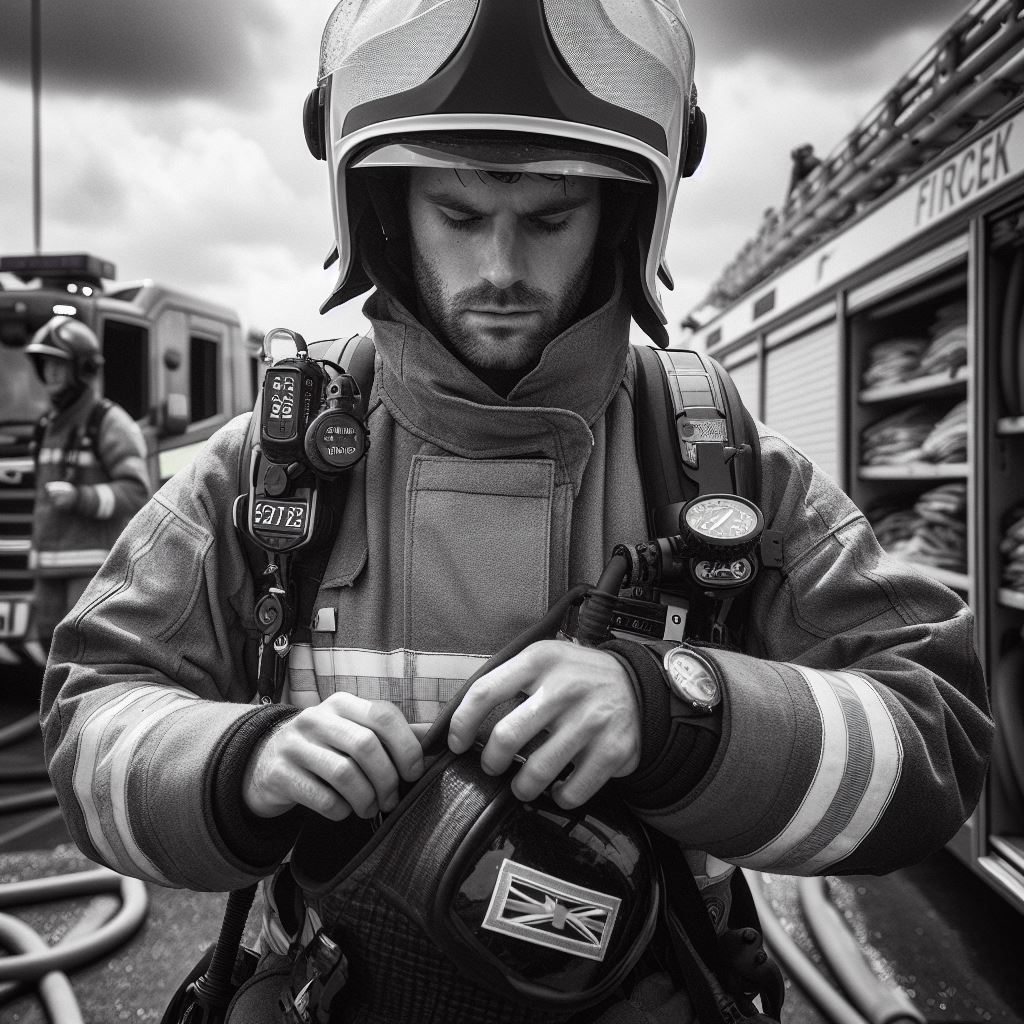
Firefighting during World Wars
A. Fire services’ role during World War I
During World War I, fire services in the United Kingdom played a crucial role in supporting the military effort.
They were responsible for protecting industries, infrastructure, and civilians from the threats of fire caused by bombings and other attacks.
Firefighters faced numerous challenges and dangers as they worked tirelessly to extinguish fires and rescue people trapped in damaged buildings.
They often had to operate in hazardous conditions and deal with limited resources.
Despite these challenges, the fire services performed admirably and their efforts were recognized and appreciated by the government and the public.
Their dedication and bravery during this time set a precedent for future firefighting operations.
B. Home Guard and Auxiliary Fire Service’s contributions during World War II
During World War II, the Home Guard and the Auxiliary Fire Service played vital roles in firefighting efforts.
The Home Guard, consisting of local volunteers, supported the fire services by providing additional manpower and resources.
The Auxiliary Fire Service, established in 1938, was responsible for fire prevention and firefighting operations.
They played a crucial role during the Blitz, a sustained bombing campaign by the Germans, which targeted major cities in the United Kingdom.
The Home Guard and Auxiliary Fire Service personnel often faced dangerous situations and worked long hours to tackle fires caused by bombings.
Their courage and resilience in the face of adversity were instrumental in minimizing the damage and saving lives.
C. Impact of the Blitz on firefighting services and strategies
- The Blitz had a profound impact on firefighting services in the United Kingdom.
- The constant and intense bombings led to a significant increase in the number of fires that needed to be extinguished.
- To combat this new challenge, firefighting strategies and equipment were developed and improved.
- Firefighters used innovative techniques and tools to tackle large-scale fires while also focusing on rescue operations.
- To safeguard firefighters, measures include establishing fire stations in safer areas and constructing deep shelters for enhanced protection.
- The Blitz also highlighted the importance of community resilience and cooperation.
- Civilian volunteers played an active role in firefighting efforts, assisting the fire services in extinguishing fires and providing support to affected individuals.
All in all, the history of firefighting in the United Kingdom during the World Wars demonstrates the bravery, dedication, and resilience of firefighters and civilian volunteers.
Their contributions during these turbulent times laid the foundation for modern firefighting practices and emphasized the necessity of preparedness and cooperation in times of crisis.
Read: Mental Health Support for Police in the UK
Modern Firefighting Practices
A. Transition from Manual to Mechanized Firefighting Techniques
- The evolution of firefighting in the United Kingdom has witnessed a significant shift towards mechanization.
- In the early days, firefighters relied heavily on manual methods such as hand pumps and buckets.
- However, with technological advancements, the fire service gradually adopted more efficient and effective mechanized techniques.
- The introduction of steam-powered pumps in the late 18th century revolutionized fire suppression efforts.
- These pumps could generate a high-pressure water flow, enabling firefighters to tackle fires more effectively.
- As the Industrial Revolution took hold, steam engines were integrated into firefighting apparatus.
- These engines could transport firefighters, equipment, and water to the scene of the fire at a much faster rate.
- The transition from manual to mechanized techniques marked a significant milestone in the history of firefighting.
B. Development of Specialized Vehicles, Personal Protective Equipment, and Communication Systems
- Alongside the transition to mechanized techniques, specialized vehicles were introduced to enhance firefighting capabilities.
- Fire engines, equipped with pumps, hoses, and ladders, became an integral part of fire departments across the United Kingdom.
- These vehicles allowed firefighters to deliver larger volumes of water to the fire, increasing their firefighting capabilities.
- In addition to vehicles, personal protective equipment (PPE) plays a crucial role in modern firefighting practices.
- Firefighters are equipped with fire-resistant clothing, helmets, masks, and boots to ensure their safety while combating fires.
- PPE has evolved, incorporating advanced materials and technologies to provide enhanced protection.
- Communication systems have also significantly improved the efficiency of firefighting operations.
- Firefighters now use two-way radios and mobile communication devices to coordinate their efforts and request resources.
C. Training and Qualifications Required to Become a Firefighter in the United Kingdom
- The role of a firefighter in the United Kingdom demands a high level of training and qualifications.
- To become a firefighter, individuals undergo rigorous training programs that cover various aspects of fire service operations.
- The training includes theoretical knowledge as well as practical skills to handle different fire situations.
- Firefighters learn about fire behavior, rescue techniques, hazardous materials, and first aid.
- Physical fitness is also a crucial aspect of firefighter training to ensure they can perform demanding tasks.
- Apart from the initial training, firefighters have to continually update their skills and knowledge through regular refresher courses.
- Fire service organizations in the United Kingdom ensure that their firefighters meet specific standards and qualifications.
- These standards encompass physical fitness, medical checks, and the completion of specific courses.
Ultimately, modern firefighting practices in the United Kingdom have evolved significantly from manual to mechanized techniques.
The introduction of specialized vehicles, personal protective equipment, and communication systems has enhanced firefighters’ capabilities to combat fires efficiently.
The rigorous training and qualifications required to become a firefighter ensure that they are well-prepared to handle diverse fire situations and protect the public.
Learn More: Technology’s Role in Modern UK Diplomacy
Challenges and Future Trends
In the ever-evolving field of firefighting, new challenges continually arise, requiring firefighters in the United Kingdom to adapt and innovate.
This section explores some of the challenges and future trends in firefighting that will shape the industry.
A. Addressing new challenges
One significant challenge that firefighters in the United Kingdom face is dealing with fires in high-rise buildings.
With the increasing number of skyscrapers in cities, tackling fires in tall structures has become a crucial task.
Firefighters have to develop specialized strategies and equipment to combat such incidents safely and efficiently.
This includes high-rise firefighting techniques, ensuring that adequate water supply and communication systems are in place.
Another emerging challenge for firefighters is hazardous materials incidents.
Industrial development and transportation of dangerous substances have increased the occurrence of such incidents.
Responding to chemical spills or toxic leaks requires specialized training and equipment to protect both firefighters and the environment.
The United Kingdom must continue to adapt its firefighting practices to effectively handle these hazardous incidents.
B. Focus on advancements in fire prevention and public education campaigns
Fire prevention plays a crucial role in reducing fire-related incidents.
To address this, the United Kingdom’s firefighting industry is shifting its focus towards advancements in fire prevention techniques.
This includes promoting awareness about fire safety, educating the public, and enforcing strict compliance with fire safety standards in buildings and public spaces.
Firefighters also play an active role in conducting inspections and audits to ensure that fire safety measures are in place.
Public education campaigns are vital in preventing fires and reducing risks.
Fire departments are actively engaging with communities through various means, such as school programs, public events, and social media campaigns.
By educating the public about fire safety, the United Kingdom aims to prevent fire incidents before they occur, ultimately reducing the burden on firefighters and saving lives.
C. Integration of technology in firefighting practices
- Advancements in technology are revolutionizing the firefighting industry in the United Kingdom. One of the most notable technological advancements is the use of drones.
- Equipped with high-definition cameras and thermal imaging capabilities, drones provide firefighters with crucial situational awareness during operations.
- They can quickly assess the severity of the fire, identify hotspots, and gather real-time data to assist in decision-making.
- Another essential technology in firefighting is thermal imaging.
- Firefighters now utilize handheld thermal imaging cameras to locate victims in smoke-filled environments and identify hidden fire sources.
- These cameras detect temperature variations, allowing firefighters to navigate through dangerous conditions more effectively.
- Furthermore, technology plays a significant role in communication and information management for firefighters.
- Integrated systems allow real-time sharing of critical information, facilitating coordination among multiple units and agencies involved in firefighting operations.
- This enhanced collaboration increases operational efficiency and improves overall incident management.
In closing, UK firefighting faces challenges of high-rise fires, and hazardous materials, and adapts with advanced prevention, education, and technology integration.
By staying ahead of these challenges and embracing innovation, firefighters can better protect lives, property, and the environment.
Conclusion
Firefighting in the United Kingdom has a rich history, starting with the establishment of volunteer brigades in the 17th century.
Over time, advancements in technology and organization led to the formation of professional fire services.
Firefighters play a crucial role in safeguarding the public from fire-related emergencies.
Their bravery, skill, and dedication ensure the safety and well-being of communities across the United Kingdom.
The fire services in the United Kingdom are constantly evolving to meet the challenges of modern society.
From improved equipment and specialized training to community outreach programs, firefighters are always adapting to better serve the public.
Their unwavering commitment to protecting lives and property is truly commendable.
On a final note, the history of firefighting in the United Kingdom demonstrates how this essential service has evolved and continues to serve as a pillar of community safety.
With ongoing developments and the unwavering dedication of firefighters, future advancements are certain to further enhance firefighting capabilities for the benefit of all.
[E-Book for Sale]
500 Cutting-Edge Tech Startup Ideas for 2024 & 2025: Innovate, Create, Dominate
$19.99 • 500 Tech Startup Ideas • 62 pages
You will get inspired with 500 innovative tech startup ideas for 2024 and 2025, complete with concise descriptions to help you kickstart your entrepreneurial journey in AI, Blockchain, IoT, Fintech, and AR/VR.

